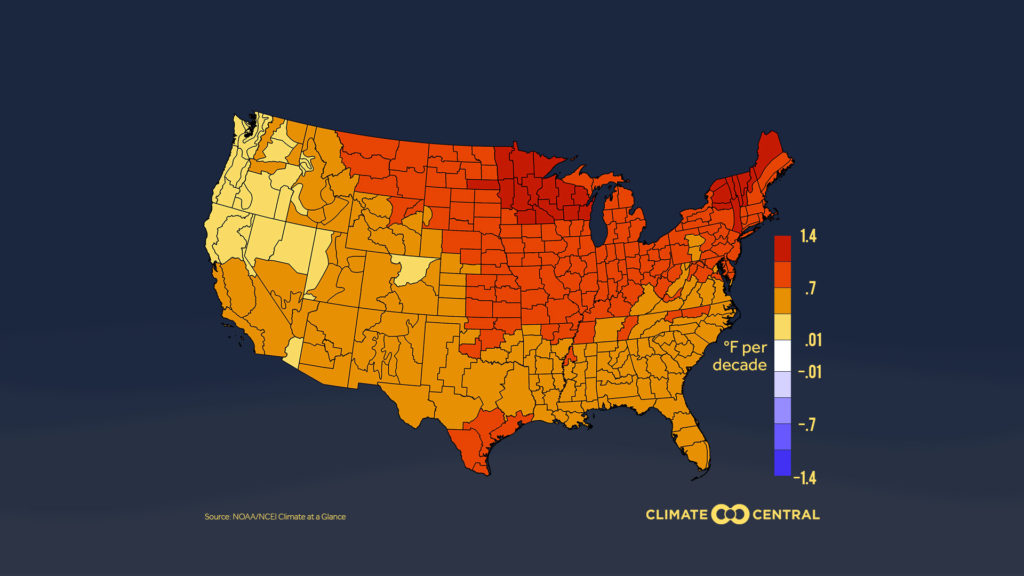 A new temperature analysis by the scientists and journalists at ClimateCentral.org shows the manifestation of global warming in various regions of the United States.
A new temperature analysis by the scientists and journalists at ClimateCentral.org shows the manifestation of global warming in various regions of the United States.
The implications for forests in each region are, of course, significant. But the new analysis provides a different seasonal perspective on what’s happening.
In the Northeast, Great Lakes and Northern Plains, for example, wintertime warming is the most dramatic. Average winter temperatures in Burlington, Vermont, have increased by 7 degrees since 1970 – and they’re still on the rise.
In Texas, however, summer is the fastest-warming season. In the Pacific Northwest, fall is warming most quickly. And in the Southwest, springtime temperatures are seeing the greatest increase.
Take a look at Climate Central’s summary of the findings below, then click on the links below for access to detailed information for your own area.
Winters are warming across the U.S., and in some locations the warming is dramatic. The Northern Plains, Great Lakes, and the Northeast are warming the fastest, while warming is taking place at a slower rate in the western U.S.
In parts of Minnesota, Wisconsin and northern New England winters have warmed at an average rate of more than 1°F per decade since 1970 — that’s more than 4°F total. The five locations with winter average temperatures warming the most are:
- Burlington, Vermont 7.0°F
- Mankato, Minnesota 6.0°F
- Minneapolis, Minnesota 6.0°F
- Fargo, North Dakota 5.9°F
- Waterloo, Iowa 5.9°F
Winter is the fastest-warming season in most of the country generally from the Front Range of the Rockies to the East Coast. The greatest warming along the northern states emphasizes a general rule of climate change — cold areas and seasons warm faster than areas and seasons that are already warm.
But there are a few exceptions. Fall is warming the fastest in the Pacific Northwest, and spring is warming the fastest the Southwest. Summers are the fastest warming season in Texas.
Warming winters may sound nice to some who prefer more moderate temperatures, but milder wwinters cansignal more difficult times for industries that economically depend on cold winters. Tourism and recreation may suffer when mild conditions negatively affect skiing, snowmobiling and ice fishing.
In the West, the warmer winters can lead to faster snow melting and less snowpack, which can stress water levels in reservoirs for areas that depend on melting snowpack later in the year for both drinking and agriculture. Plus, it can lead to drier vegetation and soils, raising the risk of wildfires. Warming winters also serve as a reminder that hotter spells are becoming more frequent and more intense when summers return.
METHODOLOGY: Each city’s winter temperature is calculated using the average temperature for December, January, and February via data from the Applied Climate Information System (ACIS). Data begins at 1970, which is the earliest reliable data is available for all of the cities analyzed across the country. National trends are compiled from each NCEI climate division.

Leave a Reply